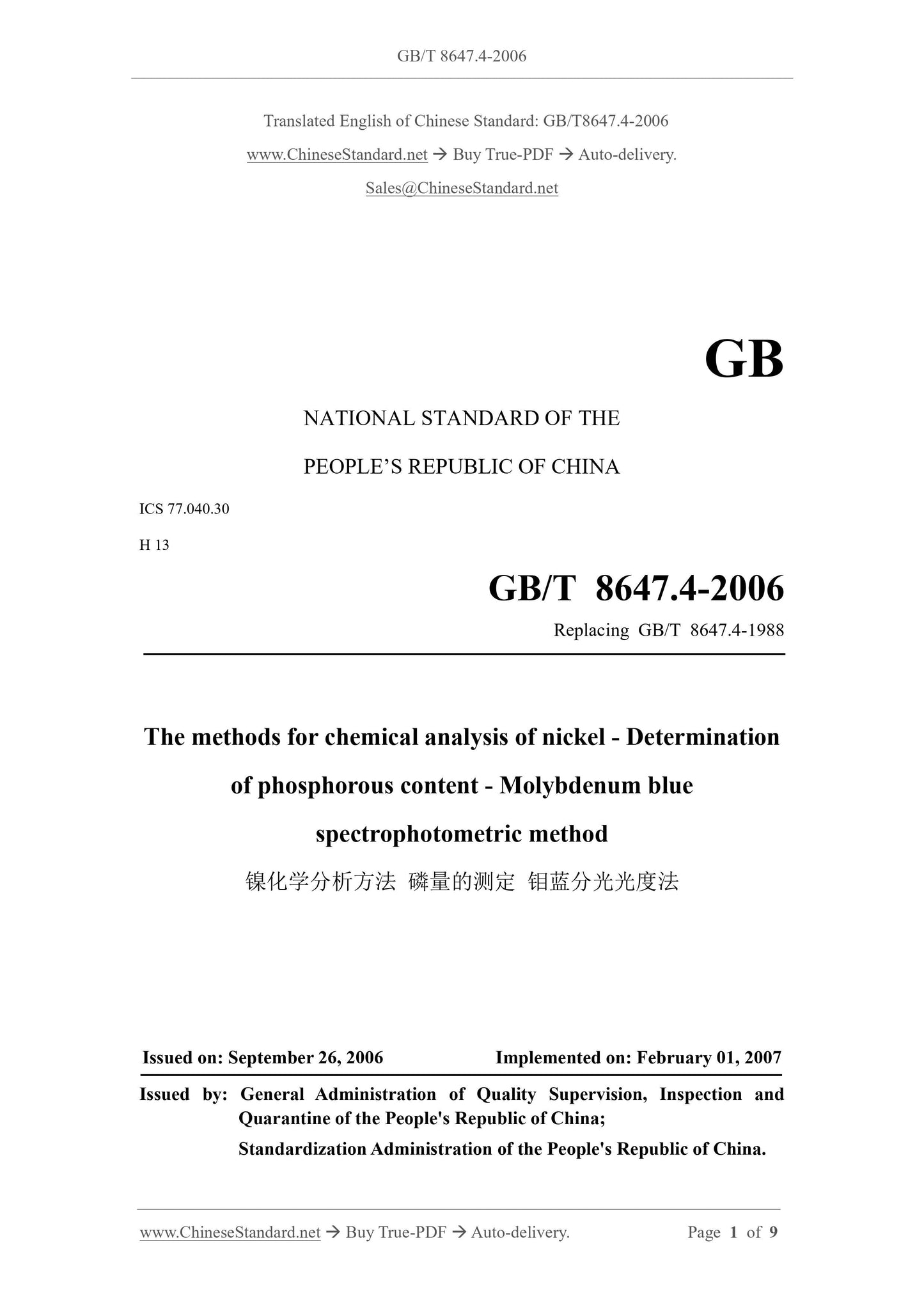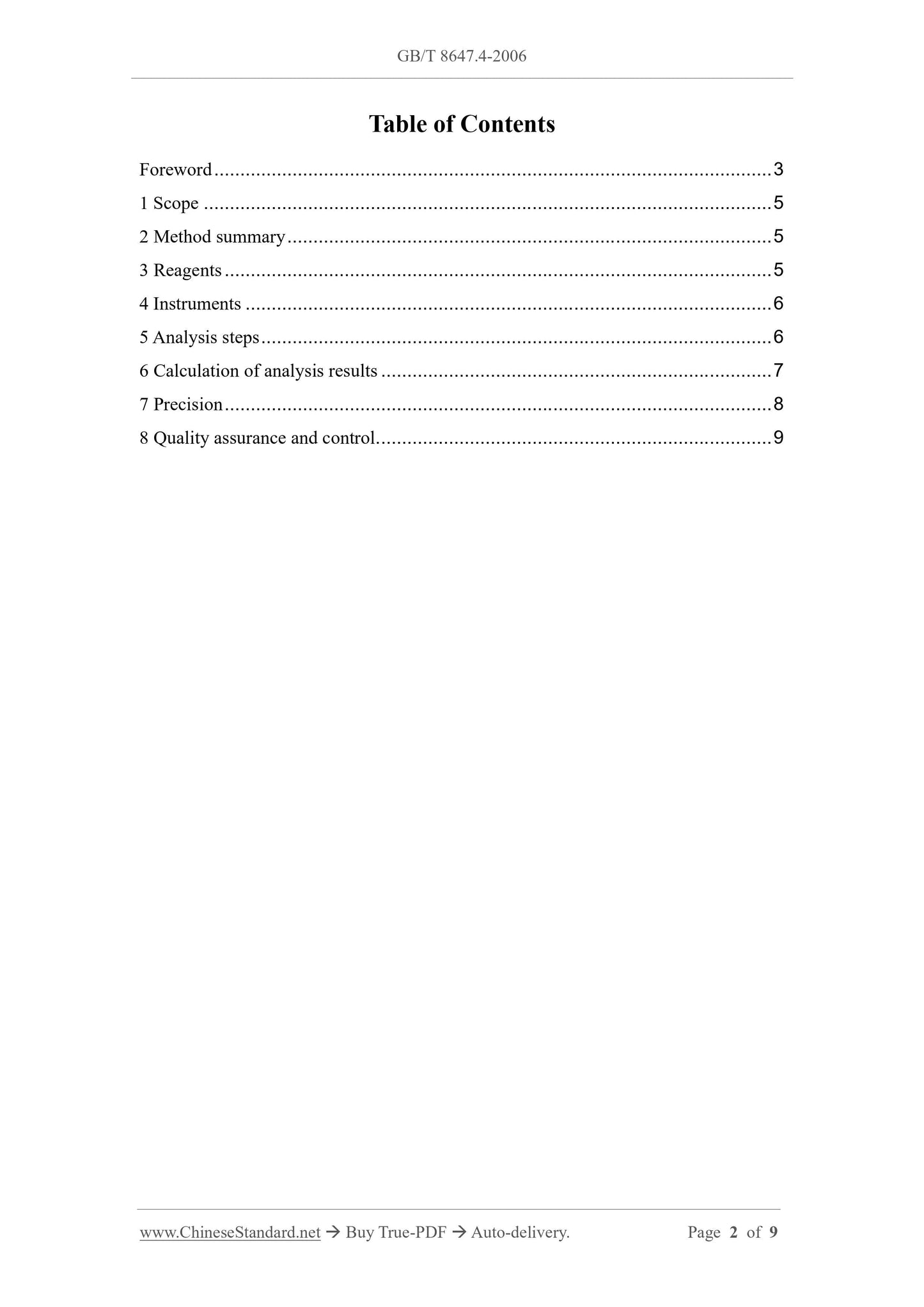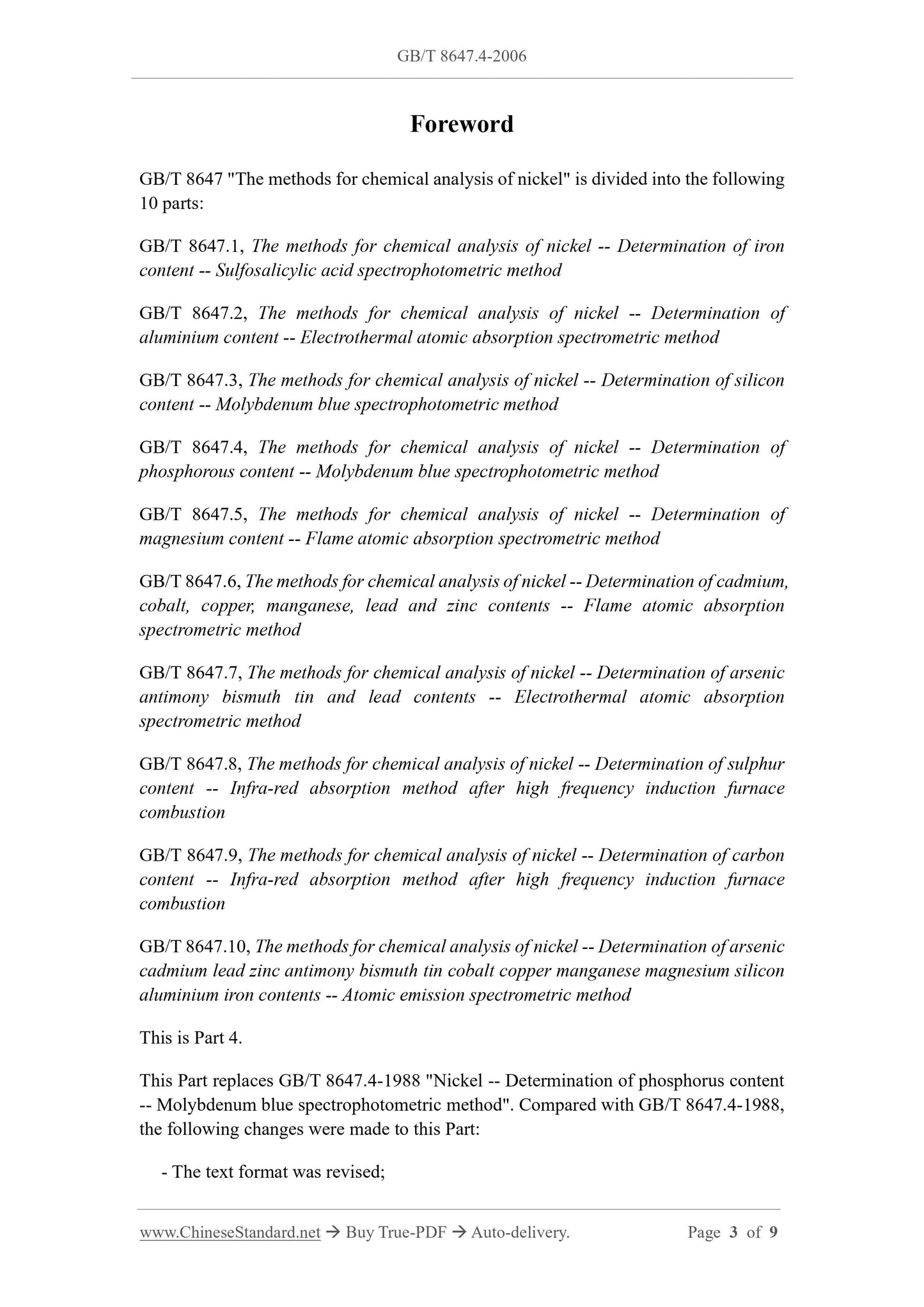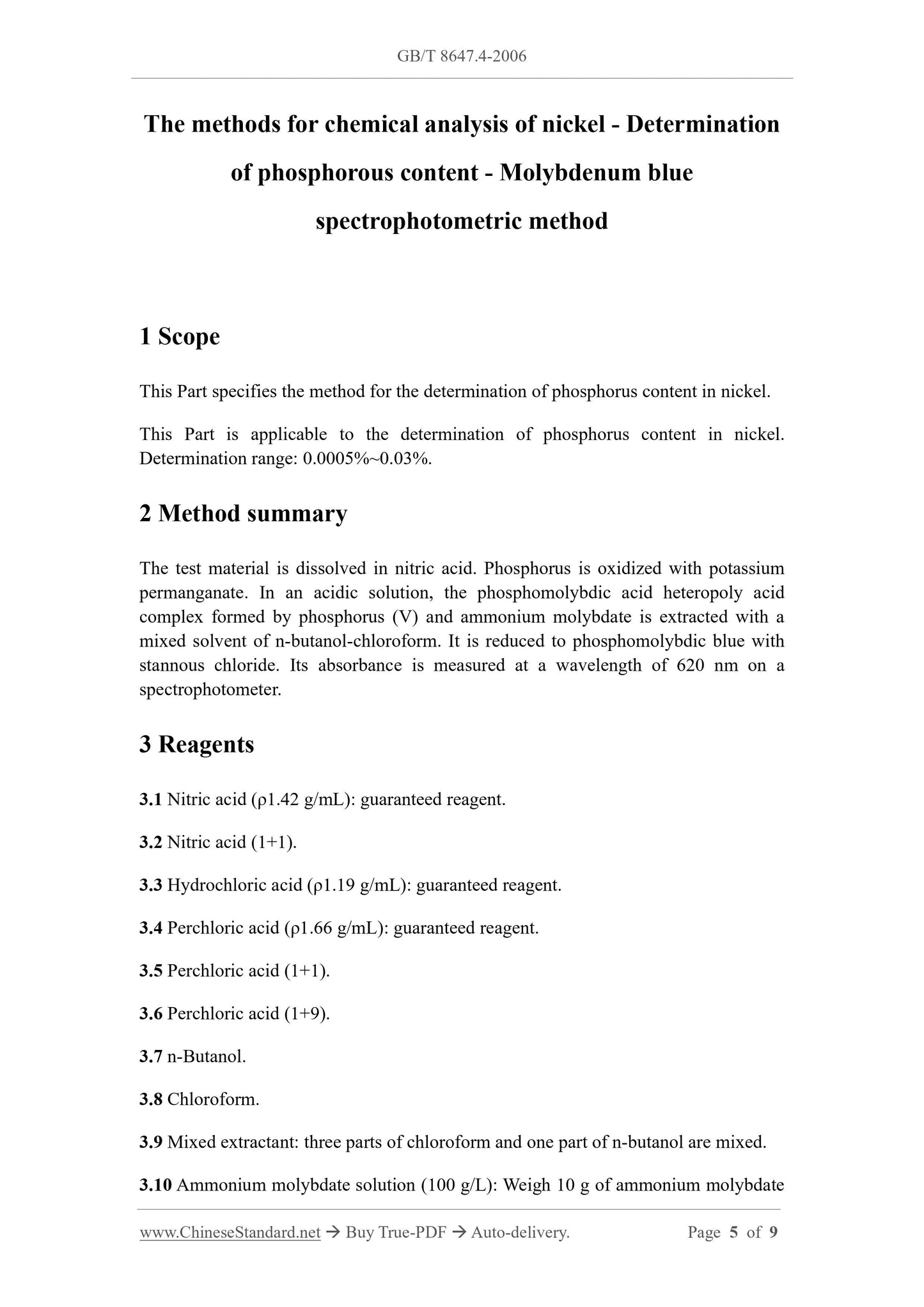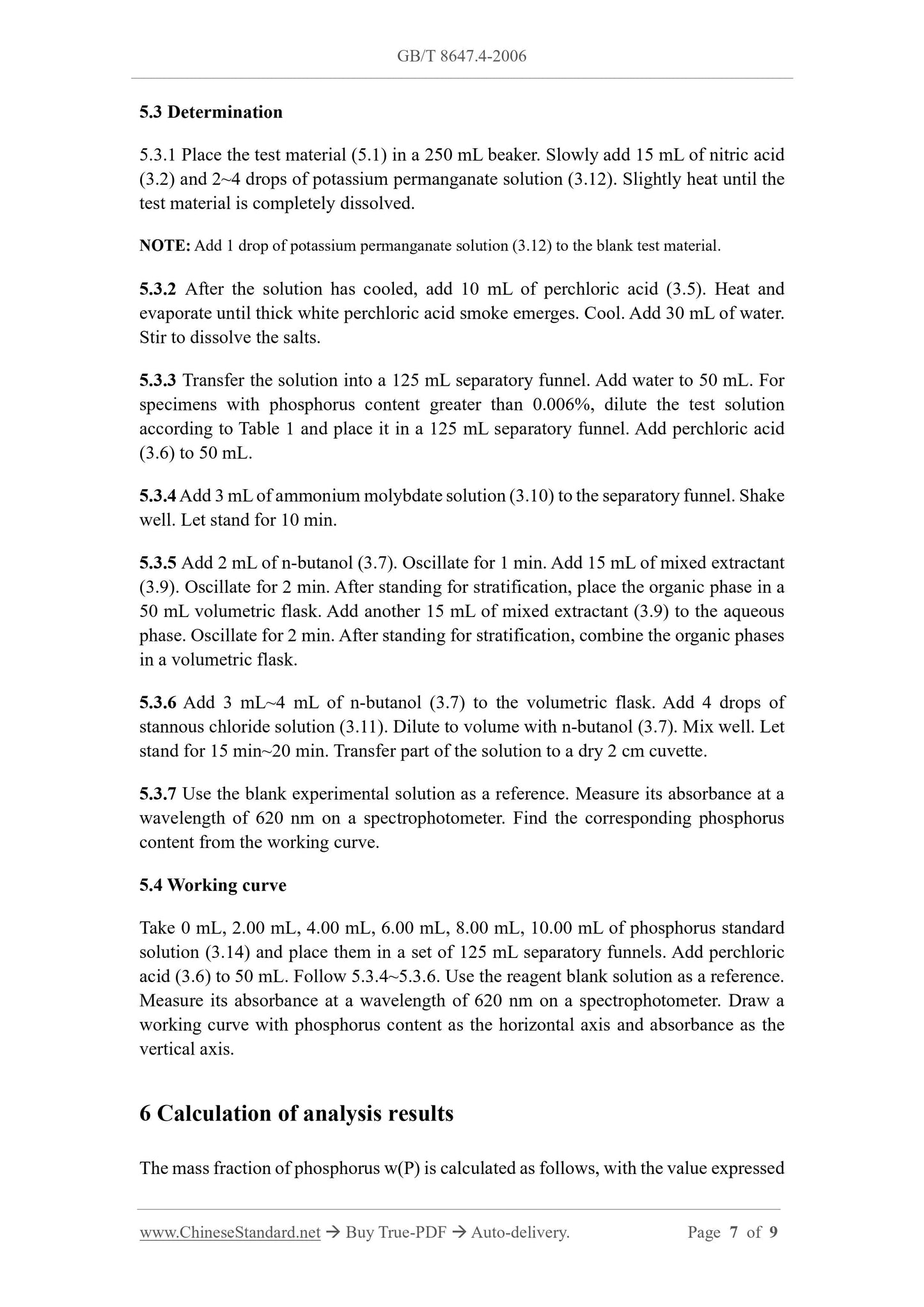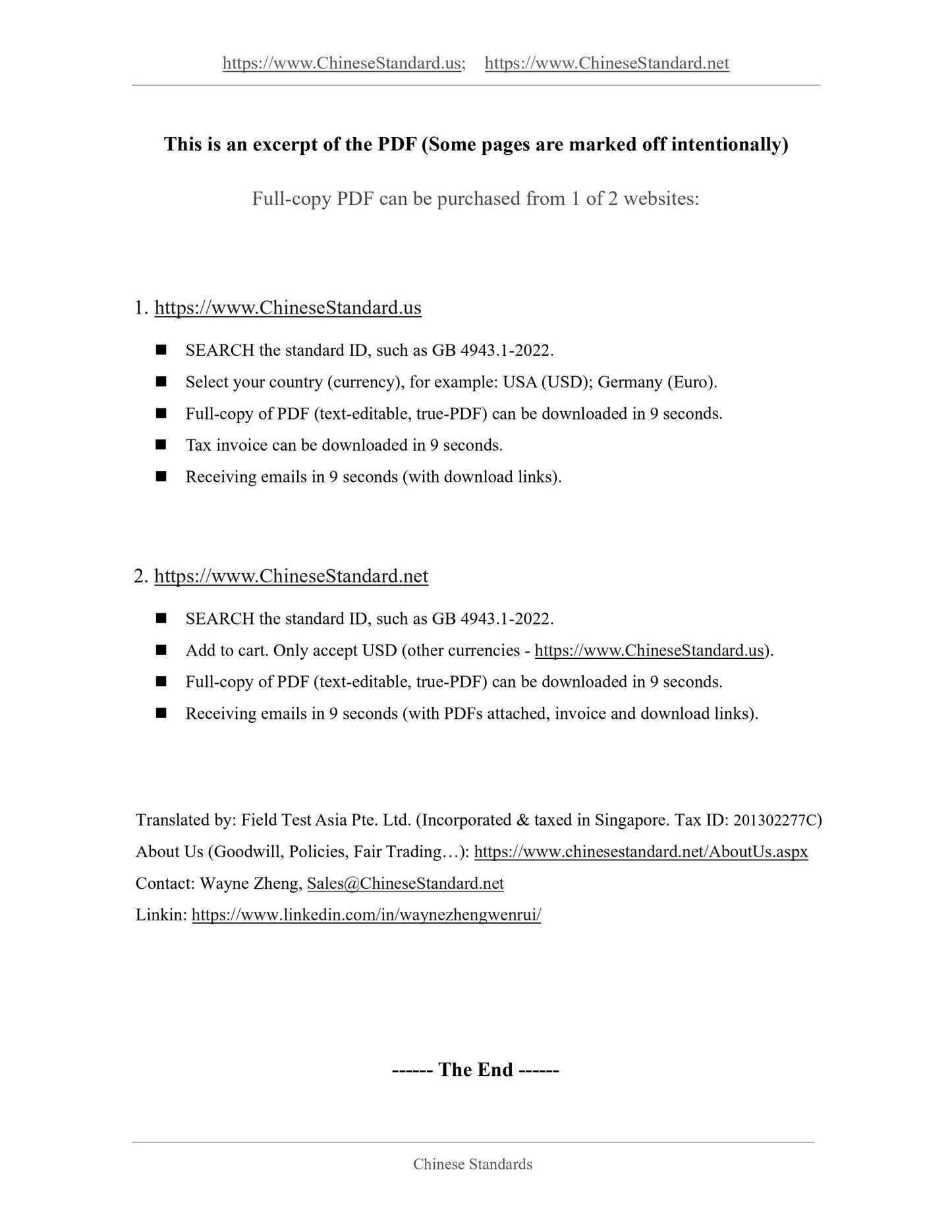1
/
of
6
www.ChineseStandard.us -- Field Test Asia Pte. Ltd.
GB/T 8647.4-2006 English PDF (GB/T8647.4-2006)
GB/T 8647.4-2006 English PDF (GB/T8647.4-2006)
Regular price
$130.00
Regular price
Sale price
$130.00
Unit price
/
per
Shipping calculated at checkout.
Couldn't load pickup availability
GB/T 8647.4-2006: The methods for chemical analysis of nickel -- Determination of phosphorous content -- Molybdenum blue spectrophotometric method
Delivery: 9 seconds. Download (and Email) true-PDF + Invoice.Get Quotation: Click GB/T 8647.4-2006 (Self-service in 1-minute)
Newer / historical versions: GB/T 8647.4-2006
Preview True-PDF
Scope
This Part specifies the method for the determination of phosphorus content in nickel.This Part is applicable to the determination of phosphorus content in nickel.
Determination range: 0.0005%~0.03%.
Basic Data
| Standard ID | GB/T 8647.4-2006 (GB/T8647.4-2006) |
| Description (Translated English) | The methods for chemical analysis of nickel -- Determination of phosphorous content -- Molybdenum blue spectrophotometric method |
| Sector / Industry | National Standard (Recommended) |
| Classification of Chinese Standard | H13 |
| Classification of International Standard | 77.040.30 |
| Word Count Estimation | 6,622 |
| Date of Issue | 2006-09-26 |
| Date of Implementation | 2007-02-01 |
| Older Standard (superseded by this standard) | GB/T 8647.4-1988 |
| Regulation (derived from) | China National Standard Approval Announcement 2006 No.10 (Total No.97) |
| Issuing agency(ies) | General Administration of Quality Supervision, Inspection and Quarantine of the People's Republic of China, Standardization Administration of the People's Republic of China |
| Summary | This standard specifies the method for the determination of nickel phosphorus content. This section applies to the determination of nickel phosphorus content. Measurement range: 0. 0005% to 0. 03%. |
Share
